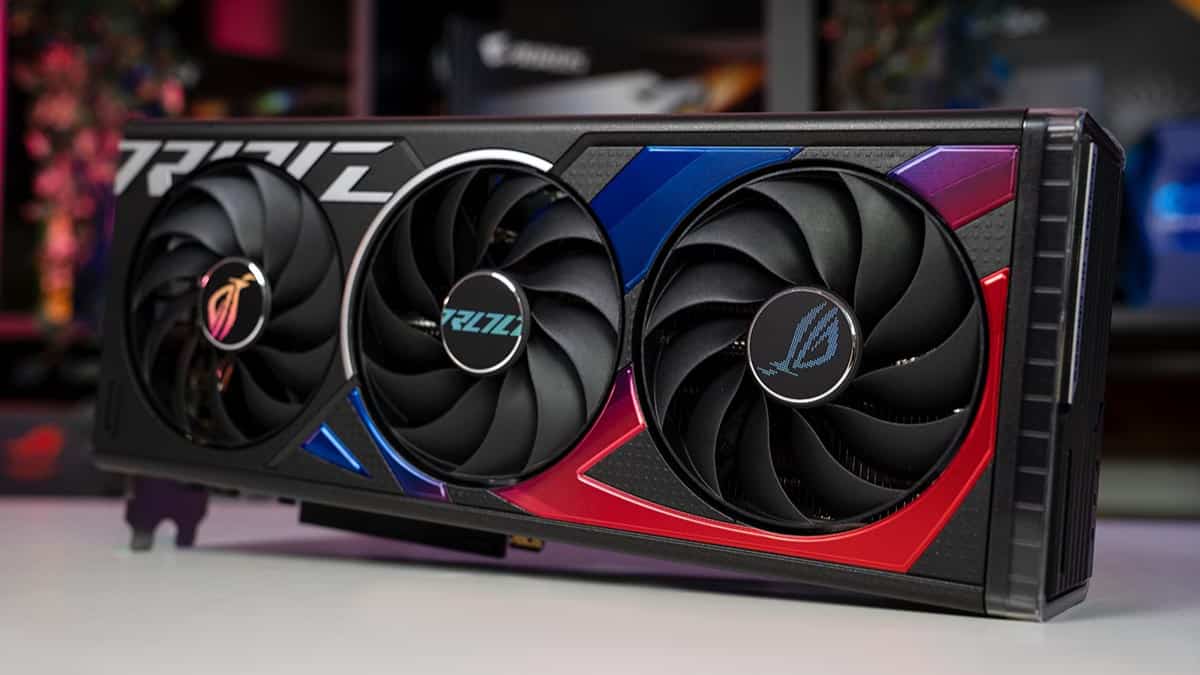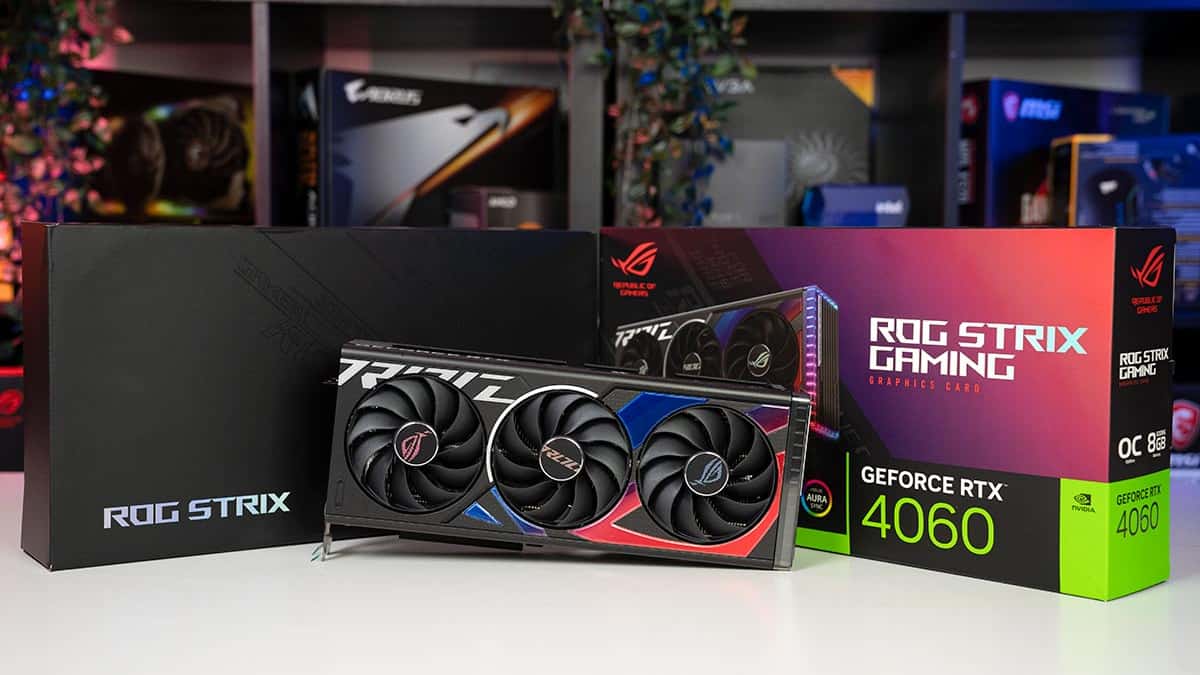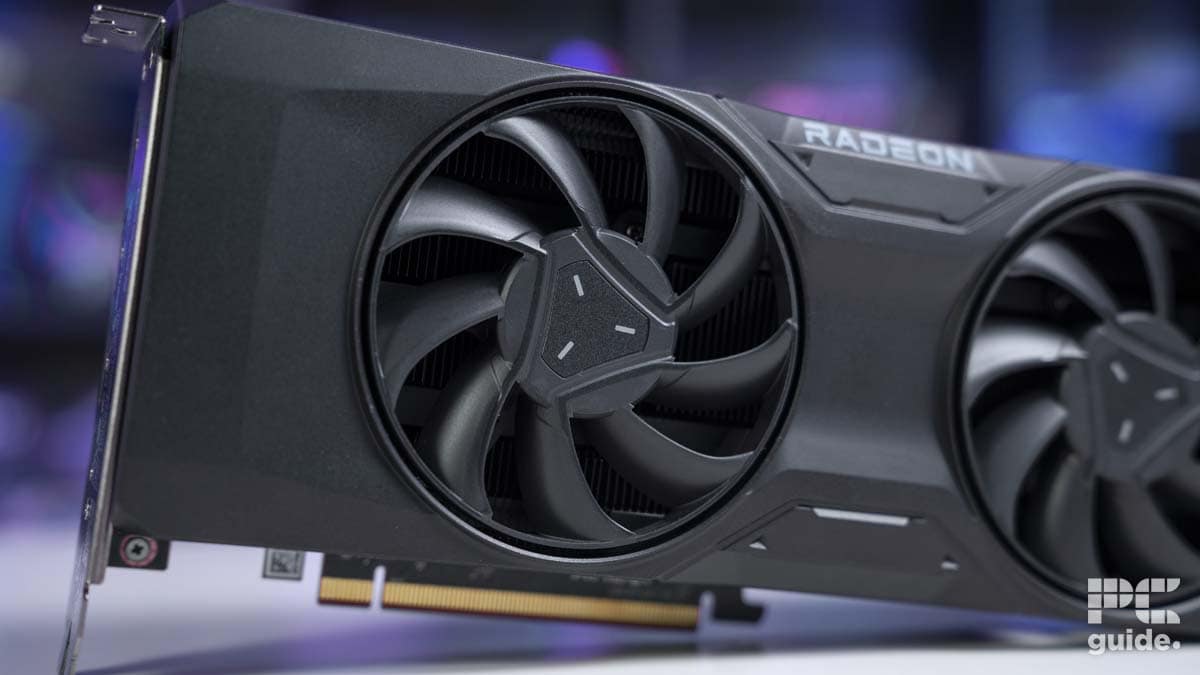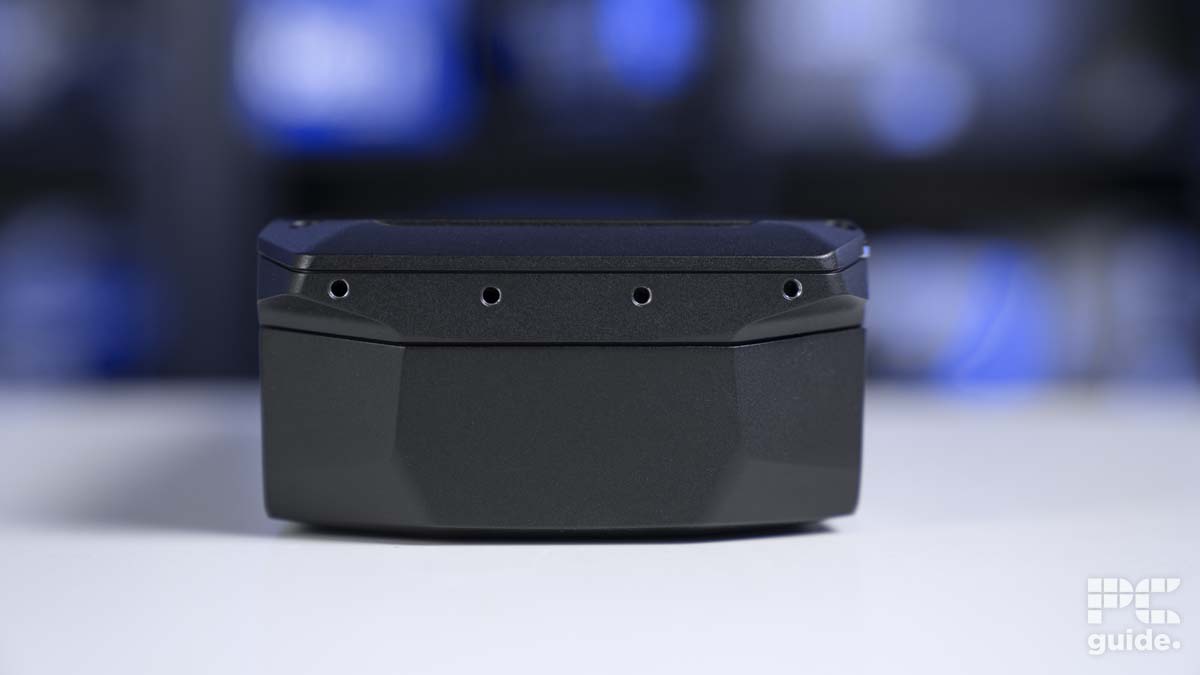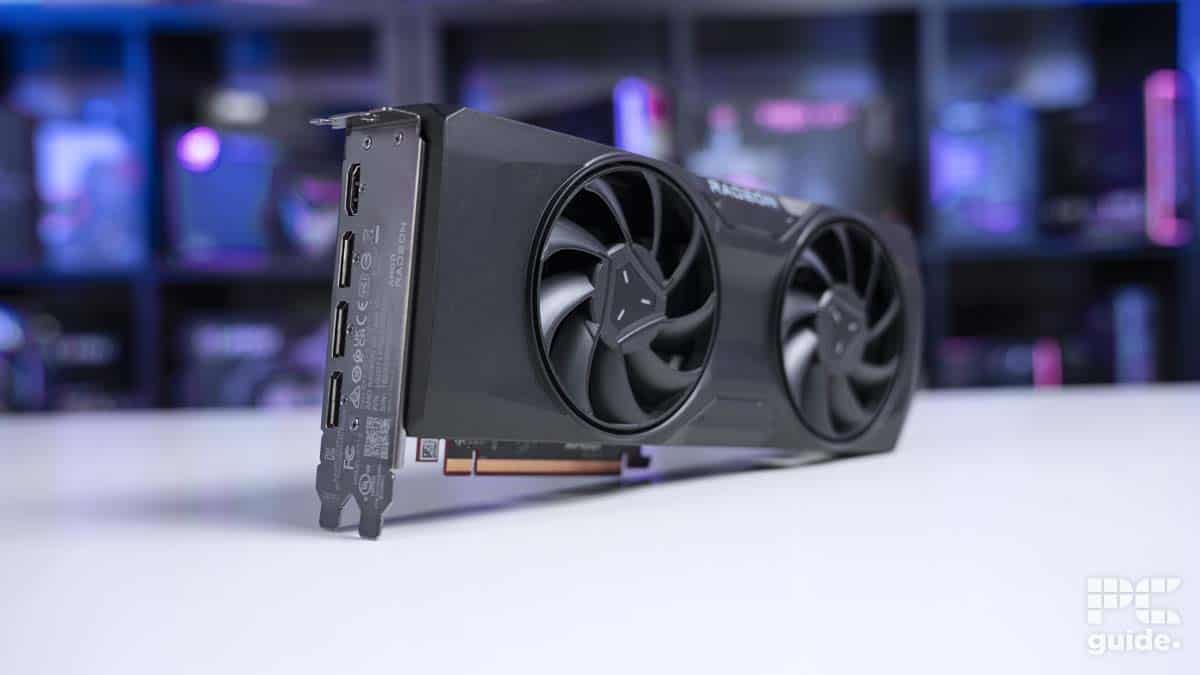Best GPUs for photo editing in 2025 – our top picks

Table of Contents
When it comes to photo editing, having the best GPU can make a world of difference in your workflow and the overall quality of your work. A powerful graphics card not only accelerates the processing of your images but also ensures smooth performance while working with multiple high-resolution images and applying complex edits.
In this article, we'll explore the top GPUs for photo editing, helping you find the perfect fit to enhance your creative process and produce stunning results. We've had plenty of hands-on experience with the latest cards, so this list will include some newer cards, as well as some less powerful older ones if you're after a more budget-friendly option.
Prime Day is finally here! Find all the biggest tech and PC deals below.
- Sapphire 11348-03-20G Pulse AMD Radeon™ RX 9070 XT Was $779 Now $739
- AMD Ryzen 7 7800X3D 8-Core, 16-Thread Desktop Processor Was $449 Now $341
- ASUS RTX™ 5060 OC Edition Graphics Card Was $379 Now $339
- LG 77-Inch Class OLED evo AI 4K C5 Series Smart TV Was $3,696 Now $2,796
- Intel® Core™ i7-14700K New Gaming Desktop Was $320.99 Now $274
- Lexar 2TB NM1090 w/HeatSink SSD PCIe Gen5x4 NVMe M.2 Was $281.97 Now $214.98
- Apple Watch Series 10 GPS + Cellular 42mm case Smartwatch Was $499.99 Now $379.99
- ASUS ROG Strix G16 (2025) 16" FHD, RTX 5060 gaming laptop Was $1,499.99 Now $1,274.99
- Apple iPad mini (A17 Pro): Apple Intelligence Was $499.99 Now $379.99
*Prices and savings subject to change. Click through to get the current prices.
Products at a glance
-
Best GPU for photo editing
ASUS ROG Strix RTX 4060 OC Edition
-
Best workstation GPU for photo editing
Nvidia Quadro RTX 4000
- GPU: TU104
- CUDA cores: 2304
- VRAM: 8 GB
- Bandwidth: 416.0 GB/s
- Memory bus width: 256-bit
- Base clock: 1005 MHz
-
Best VRAM GPU for photo editing
MSI Gaming RTX 3060
- GPU: GA106
- VRAM: 12 GB
- Bandwidth: 360.0 GB/s
- Memory bus width: 192-bit
- Base Clock Speed: 1320 MHz
- Boost Clock Speed: 1777 MHz
-
Best AMD GPU for photo editing
AMD Radeon RX 7800 XT
- GPU: Navi 32
- Stream Processors: 3,840
- VRAM: 16 GDDR6
- Memory bus width: 256-bit
- Bandwidth: 624.1 GB/sec
- Base clock speed: 1,295 MHz
How we selected the best GPUs for photo editing
Our selection process for the best GPUs for photo editing involved thorough research and analysis of the specifications and performance of various graphics cards available on the market. We considered factors such as performance, VRAM capacity, compatibility, display support, and overall value for money. We also took into account user reviews, our own testing, and expert opinions to ensure that our recommendations cater to a wide range of creative editing needs, from casual hobbyists to professional photographers.
As part of our hands-on reviews, we tested GPUs to achieve benchmark results. To see how we went about this process, make sure you check our dedicated GPU testing page. Additionally, if you are in the market for a GPU, head over to our best graphics card guide for all the latest and greatest choices.

- GPU: AD107 die
- CUDA cores: 3,072
- VRAM: 8GB GDDR6 VRAM
- Bandwidth: 272 GB/s
- Memory bus width: 128-bit memory bus
- Base clock speed: 1830 MHz
- Boost clock speed: 2670 MHz
- Powerful enough for the likes of Photoshop and Lightroom
- Supports NVIDIA DLSS and is great for 1080p gaming
- Decent for video editing also thanks to 8GB of speedy VRAM
- May be overkill if you’re just using it for photo editing
- A near-entry level 4000 Series card – so don’t consider if you’re after more of an all rounder
The Nvidia RTX 4060 is the entry-level GPU of the 4000 series, but as we found in our 4060 review—it's a versatile all-rounder that makes it an easy top pick. Under the hood, you've got an ample 8GB of VRAM, which ensures smooth sailing for photo and even video editing.
The Nvidia RTX 4060 is a solid video card for 1080p and 1440p gaming at a good price point.
PC Guide
We've given it the top spot, however, because of its prowess in other areas, too. For one, our benchmarking data revealed solid performance at both 1080p and 1440p resolutions across a number of our games, not to mention impressive encoding times in HandBrake's Tears of Steel 4K render and Cinebench R24. In other words, the 4060 is a fantastic all-rounder for those wanting a PC that can work and play hard.
To further emphasize the point, it managed 77 and 48 FPS in Cyberpunk 2077 at 1080p and 1440p, while in less demanding titles like Rainbow Six Siege, it churned out 392 and 241 in the same resolutions. In addition, its graphics score in Fire Strike Ultra was 5,725, and the overall score was 6,039. These values showcase that it is more than able to handle a graphically challenging workload, so running Photoshop or other photo editing software should be a walk in the park.
What users say
On Amazon, the ASUS ROG Strix RTX 4060 has a rating of 4.7 stars at the time of writing. Most reviews are positive, and they speak about the GPU’s performance, quality, and value-for-money factor. One of the customers wrote in a review – “The ASUS ROG Strix GeForce RTX 4060 OC Edition is an exceptional graphics card that offers a great balance of power and efficiency for gamers and creators alike.”
- Designed specifically for professional workflows
- Advanced features like ECC memory
- Optimized performance for professional photo editing applications
- Not ideal for casual users
- May require a workstation-grade PC setup
- Not the right choice for those wanting a gaming PC
The NVIDIA Quadro RTX 4000 graphics card is designed for professional photo editors who work with complex images and require high performance.
To start with, the GPU comes with 2,304 CUDA cores, delivering exceptional performance for photo editing tasks. Further, it has dedicated RT cores that enable real-time ray tracing for more realistic rendering and lighting effects in your photos. Similarly, the tensor cores helps make your work easier with AI-powered features in photo editing software, such as noise reduction and image scaling.
Considering that the GPU supports 10-bit color depth for accurate color reproduction and HDR editing, this amount of VRAM can come in handy.
PC Guide
As far as memory is concerned, you get 8GB of high-speed GDDR6 memory, which allows for smooth performance when handling large image files and complex edits. Considering that the GPU supports 10-bit color depth for accurate color reproduction and HDR editing, this amount of VRAM can come in handy.
As the Quadro series GPUs are meant for professionals, it is optimized for stability and compatibility with leading photo editing applications like Adobe Creative Suite, CorelDRAW, and Capture One. It also offers Error-Correcting Code (ECC) memory and hardware-based video encoding to enhance stability and reduce the risk of errors during editing.
Overall, the NVIDIA Quadro RTX 4000 is a powerful and reliable graphics card that can handle the demanding workloads of professional photo editors.
What users say
On Amazon, the NVIDIA Quadro RTX 4000 has a rating of 4.4 stars, and it has been rated by over 190 people. Most positive reviews mentioned that the customers were pleased with the quality and performance of the card.”Overall, I am very pleased with the no-hassle performance of this card, along with the very fast real-time render performance I get in Blender and Unity. It carries a load well, and the drivers are rock solid, which was important for me,” one of the customers wrote in a review.
- GPU: GA106
- VRAM: 12 GB
- Bandwidth: 360.0 GB/s
- Memory bus width: 192-bit
- Base Clock Speed: 1320 MHz
- Boost Clock Speed: 1777 MHz
- CUDA cores: 3584
- Energy-efficient design and won’t require a beefy PSU
- 12GB GDDR6 memory – plenty for both work and play
- Supports ray tracing and DLSS (although not the latest version of the latter)
- Less powerful than the RTX 3070, which is worth opting for if budget allows
- Slightly cheaper than some of the other cards, but older tech
The NVIDIA GeForce RTX 3060 graphics card is a strong choice for photo editors who prioritize performance without breaking the bank.
The RTX 3060 features advanced NVIDIA Ampere architecture with a high core count (3584 CUDA cores, to be specific) for efficient photo editing tasks. This means you should be able to perform better for common photo editing tasks than previous generations.
While this GPU is not exactly geared towards professionals, it can be well-suited for both photo editing and creative applications like video editing and 3D design.
PC Guide
Further, you get 12GB of GDDR6 memory, which should ensure smooth performance when working with large photos and applying complex edits. Considering that you'd work with high-resolution displays and HDR (High Dynamic Range), the VRAM should speed up your workflow.
While this GPU is not exactly geared towards professionals, it can be well-suited for both photo editing and creative applications like video editing and 3D design (with some limitations compared to higher-end cards). Overall, the GeForce RTX 3060 offers excellent value for photo editors seeking a balance between performance and affordability.
What users say
On Amazon, the MSI Gaming GeForce RTX 3060 has an average rating of 4.7 stars, and it has more than 2,900 ratings. As per the customer reviews, most people seemed to be happy with the performance, build quality, and price of the card. “For the price it can’t be beat. Sure there are better cards out there, but they required dipping into your kids college fund to afford. This is an easy purchase if you lay off the Starbucks for a month or two,” one of the customers said in a review. A few people pointed out the GPU got a little noisy under pressure.

- GPU: Navi 32
- Stream Processors: 3,840
- VRAM: 16 GDDR6
- Memory bus width: 256-bit
- Bandwidth: 624.1 GB/sec
- Base clock speed: 1,295 MHz
- It has excellent 1440p performance
- It can push 4K in some titles
- It costs less than Nvidia alternatives
- It doesn’t have the best Ray Tracing performance
- It isn’t the best card for creators
The RX 7800 XT is dubbed the “Ultimate 1440p upgrade” by AMD, and that is true as it delivered exceptional performance during our 7800 XT review at 1440p and even managed to cross over to the 4K domain in some titles. So, taking its performance into consideration, this is the best GPU for photo editing if you lean more toward Team Red.
This GPU comes with 3,840 stream processors, a 2,124 MHz game frequency, a 2,430 MHz boost frequency, and 240 texture units. These specifications mean that it has enough hardware under the hood to tackle graphically intensive workloads and should be able to run Photoshop or GIMP without a hitch, resulting in smooth content creation.
It also features 16 GB of GDDR6 VRAM with a 256-bit memory interface. This means it has plenty of memory to handle resource-intensive applications, and the 256-bit memory interface should ensure that data can travel to and from the GPU seamlessly without running into bottleneck issues.
Since its launch, the RX 7800 XT has been an incredibly aggressively priced and powerful video card with strong ray tracing prowess compared to the previous generation RX 6800 XT.
PC Guide
Regarding its performance, in Blender 4.0, it managed 1130.8 points in Monster, 586 points in Junkshop, and 561.2 points in Classroom. So, this should give you an idea of how well it can render, but for photo editing, it should be more than enough as even the latest version of Photoshop, version 25, has humble system requirements. Compared to this, the 7800 XT seems like overkill.
Overall, this is an excellent GPU that can handle creative workflows and has better gaming performance as well. However, that doesn’t mean it’s a total dud, and whatever you want to create in photo editing software like GIMP or Photoshop, you should be able to with ease.
What user say
According to Amazon reviews, this card has better value than its Nvidia counterparts, and its performance leaves very little to the imagination. One reviewer stated: “Plays top tier games in 1080 or 1440 on high graphics settings with high frame rates and no issues.”
Considerations for the best GPUs for photo editing
When choosing the best GPU for photo editing, it's crucial to consider the features that will impact your editing experience. First and foremost, you'll want to ensure that the graphics card you choose offers excellent performance for handling large image files and running editing software such as Adobe Photoshop and Lightroom. Look for GPUs with a good amount of VRAM, as this will allow you to work with multiple high-resolution images simultaneously without slowing down your system. If you're looking just for a GPU that can run Photoshop well, you can find our top picks in the best GPU for Photoshop guide we've created.
Another important aspect to consider is the GPU's compatibility with your existing hardware and software. Make sure the graphics card you choose is compatible with your computer's motherboard, power supply, and the editing software you use. Additionally, check if the GPU supports the latest display technologies, such as high-resolution monitors and multiple displays, as this can greatly enhance your editing workspace.
What size GPU do I need for photo editing?
The size of the GPU you need for photo editing depends on the complexity of your projects and the software you use. In most cases, a mid-range GPU with at least 8 GB of VRAM should be sufficient for handling basic to moderately complex editing tasks. However, if you work with high-resolution images, multiple layers, or use GPU-intensive filters and effects, you might benefit from a more powerful GPU with 16 GB or more VRAM.
Does GPU affect photo editing?
The GPU can significantly impact editing performance. A powerful GPU can accelerate various tasks, such as applying filters, rendering effects, and processing high-resolution images, leading to a smoother and more efficient workflow. Many modern editing software applications, such as Adobe Photoshop and Lightroom, utilize GPU acceleration to enhance performance. Therefore, investing in a good GPU can result in a better overall experience and faster processing times when working with editing software.


